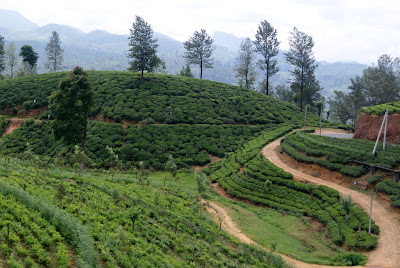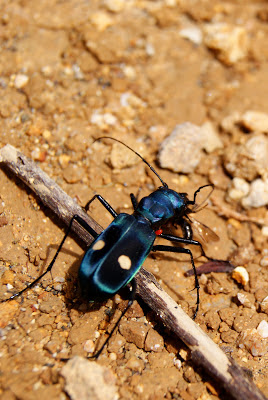Adam’s Peak, also known as “butterfly mountain”, is Sri
Lanka’s holiest mountain and most famous pilgrimage site. Near the summit, a
6-foot rock formation resembling a footprint, called Sri Pada, is said by Buddhists
to belong to the Buddha, by Hindus to belong to Shiva, and local Christians and
Muslims believe that it is the place where Adam first set foot on earth after
being cast out of Eden. Important to all local religions, it has become a must
for Lankans to complete the pilgrimage at least once in their lifetime.
To reach the summit of Adam’s Peak, pilgrims climb 5200
increasingly steep steps, ideally reaching the peak just before dawn. During
pilgrimage season, which lasts for about six months out of the year, the path
and steps are illuminated by rigged overhead lights, and tea and snack shops
stay open throughout the night, refreshing pilgrims on their trek.
Unfortunately, we weren’t in Sri Lanka during pilgrimage
season. This meant that in getting from Anuradahpura to Delhousie at the base
of Adam’s Peak required not two buses, as it would during pilgrimage season, but
four. Unfortunately for us, overland travel in Sri Lanka takes a surprisingly
long time, considering how small the island is as a whole. The bus crawled over
mountain roads, hardly one lane wide, that curved up, around and back, snaking
its way through tea plantations toward Hatton. Houses were carved into the mountainsides, made up of
many narrow stories stacked around the mountain’s natural shape, sometimes only
the top floor at street level, with many stories built downward instead.

By the time we reached Hatton, dusk had settled over the
town and the last bus of the day had already left. This left only one option:
tuk-tuks. For 1000 rupees (roughly $10) we hired a tuk-tuk to drive us all the
way to Delhousie, about an hour away. Under normal circumstances, an hour in a
tuk-tuk would be unpleasant; on narrow mountain roads, in the dark of night and
driving rain, it was terrifying. And, since he had promised to make it in under
an hour, our little tuk-tuk was bouncing and jostling down dirt roads at
incredibly high speeds, all while he called various guesthouses to get a commission
when we arrived.
After a massive pile of noodles, we turned in for a couple
hours of sleep. In order to make it to the top by dawn, a departure time of 2am
is required. We suited up: sneakers, long pants, Win’s sweatshirts, and a
flashlight borrowed from the guesthouse. And we were glad we did; Sri Lanka’s
Hill Country, especially when you’re in the forest at night, is downright cold.
Heavy mist hung about the mountains, giving the silence mass, density.
The path started out mostly flat, easing through the
hillside tea plantaions, with some gradual incline and occasional steps. A
stray dog, limping its way along, seemed to be keeping pace with us, disappearing
and reappearing at random. After passing a donation tent where string was tied
to our wrists with a blessing (and we signed a guestbook in the event we lost
our way and wandered around in tea plantations until found), we found ourselves
rising a bit more.
The only other people on the path were clusters of foreigner
tourists, each brandishing his or her own flashlight. As cold gave way to perspiration,
we stuffed our sweatshirts in the backpack, and water breaks became more
frequent. Time became meaningless, minutes held no concrete substance, there
were only stairs, stairs, stairs. At some point it started raining; mist, rain,
and stagnant sweat clung to my arms, my face. Sweatshirts were re-donned. Some
three hours in and it was just vertical stairs and handrail.
Somehow we reached the summit. I might have cried a little, I
felt like I was going to throw up, my legs like jelly, my pulse pounding out an
erratic beat in my head, and the limping stray dog made it to the top before
us, but I made it. A tea shop at the top warmed new arrivals, as they waited
for the summit temple to open at 6am. The hot tea brought feeling back to my
fingertips.
After watching the sun rise, a layer of clouds spilling out
below us like a vast cottony sea, we were the first to venture onto the summit
temple. Removing our shoes and socks, we rushed across the marble floor,
through puddles of freezing nighttime water, and rang the bells, two notes
vibrating across the cloudscape, full of blessings.
And then we had to clomp our way back down the mountain,
back down all those stairs, back through the mist and rain, back to our
guesthouse where we could collapse into exhausted slumber, losing a full day to
sleep.













































